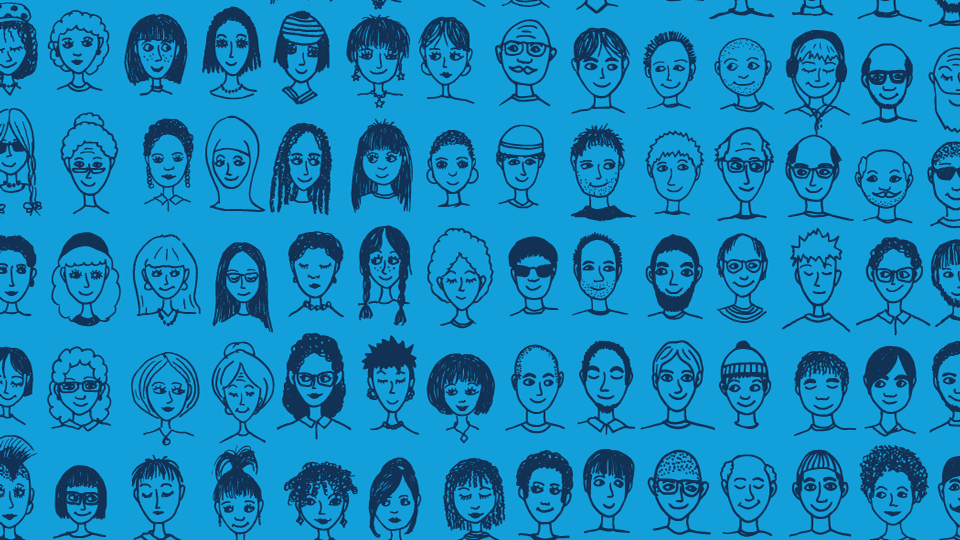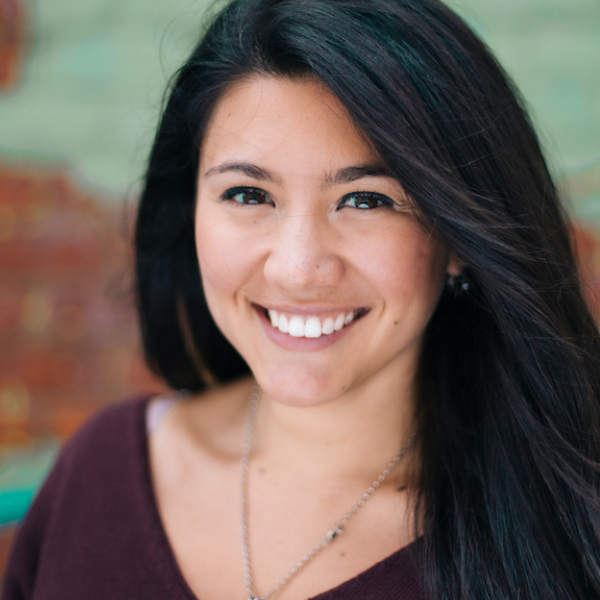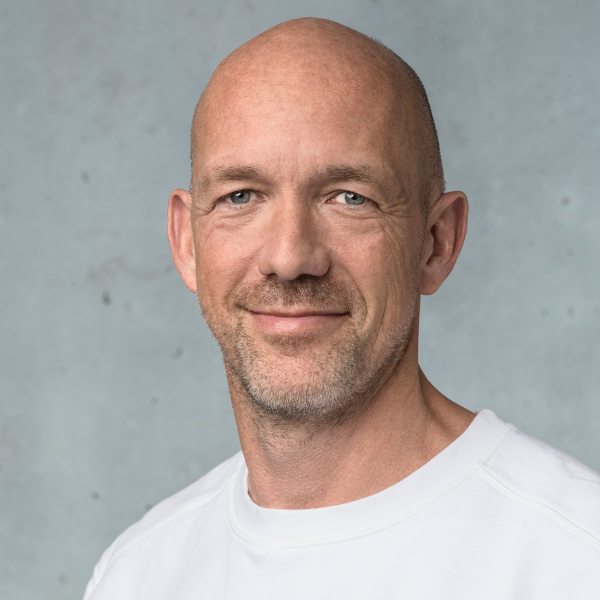
In 2008, five idealistic twentysomethings began thinking about what their generation would do, someday, as leaders. In their vision of the future, millennial leaders would face problems, such as the effects of a warming climate, that would require significant international cooperation. But as they saw it, young people had few opportunities to interact and foster relationships in a global network. Older, more established innovators, entrepreneurs and changemakers had myriad chances to join together at events like the World Economic Forum at Davos, Aspen Ideas, and TED. But what if the leaders of tomorrow had these same opportunities to gather? How might individuals and society at large benefit?
By the end of 2009, that group of five — Fabian Pfortmüller, Nico Luchsinger, Antoine Verdon, Christian Busch, and Severin Jan Ruegger — had launched Sandbox, a network that would bring together young people in small groups and large meetings to learn from one another and serendipitously create opportunities via authentic connection. This community, they imagined, would support millennials who wanted to bring greater value and purpose to existing and new enterprises, the kind of people who wanted to help address the major issues that face contemporary society but might feel uncertain about whether or not pursuing values-based change could be feasible.
The founders agreed that Sandbox’s community should therefore be built on a core set of values: trust, empowerment, empathy, openness, and a strong desire to break down cultural barriers and center shared human experiences. “I think that being someone who tries to create change is often quite a lonely job,” says Fabian. “The idea with Sandbox is to surround people with a place and a family where they don’t feel like they’re doing this alone.”
But creating a new kind of global community would also mean confronting practical and logistical challenges, since a collective with a strong values-based mission would ultimately require a governance and funding structure different from the prevailing models used by hierarchical organizations.
Focused on the ideals they wanted their community to embody, Sandbox’s leaders spent little time on the financial model that would later cause significant turmoil among community members. Fortunately, these issues would serve to eventually strengthen the Sandbox community, which under the leadership of Michael Mayernick and others has transformed into a financially sustainable collective with a decentralized governance structure that empowers Sandbox members.
‘I DON’T FEEL CRAZY ANYMORE’
In 2008 and 2009, Sandbox’s founders were devising a specific plan for how their global community for young people would operate. The concept of the “social network” had just begun to emerge as a pathway for increasing interconnectedness on an international scale and, potentially, enacting social change. In 2006, Facebook was opened to the general public, joining now-defunct platforms like Friendster and Myspace.
Creating a community with a digital and physical component was uncharted territory, but Sandbox’s founders had noticed how Barack Obama’s presidential campaign had mobilized online social platforms to win the U.S. presidential election in 2008. Seeing the network’s potential, Sandbox’s founders began attracting members via a series of smaller events — intimate dinners in London, Zurich, New York City, and Singapore. Newly accepted Sandboxers (as the community calls its members) would keep in touch via digital communication: WhatsApp group texts, Facebook pages, etc. Informal events and organizing eventually blossomed into a more formal structure of city-based “hubs” led by volunteer ambassadors. The entire global community, which quickly grew to a membership of 900 people and included hubs in New York, London, Manilla, Mexico City, and Nairobi, was overseen by a management board comprising the founders.
As evident in Sandbox’s rapid growth, initial effort at building a community of visionaries was successful. New members consistently praised the organization’s approach to building social relationships among peers. For the first time, members said, they felt safe sharing their ideas for innovation and entrepreneurship with people who were essentially strangers. According to founders Christian and Fabian, many members said they had shied away from sharing their respective vision because of hesitations like “Oh my God, this is something that might not be achievable” and fears about how their peers in the same industry would receive those ideas. “I think a member put it nicely when he said, ‘Sandbox is the only place where I don’t feel crazy anymore,’” says Christian.
Christian and Fabian credit Sandbox’s success at connecting members to a mindful focus on discussing challenges rather than achievements at those early dinners. Mealtime questions would circle around things like: “What challenges are you facing?” And, as a follow up: “What can we do to help you on that journey?” The goal was that members would join not because of what other Sandboxers had done, but what they might have the potential to do—someday. “We were very focused on creating a sense of intimacy, and stripping down the barriers that keep people from really coming together,” says Fabian.
Through close connection, Sandbox members have been able to harness shared enthusiasm and successfully develop the network’s programming as well as their own individual projects. In the years since 2009, notable Sandbox “moments” have included Sandboxers encouraging one member’s dream to create a documentary series on regional dance traditions; facilitating connections between the global North and South to organize an entrepreneurship conference in Kenya; and encouraging thoughtful dialogue around global food systems.
BIG IDEAS, TOO LITTLE FUNDING
Sandbox quickly achieved success among its members, creating a strong group culture defined by supportiveness and warmth. But creating a financially solvent model would be much more difficult.
In Sandbox’s early days, Fabian and Christian had concerns similar to other social and cultural groups that cater to millennials. They believed their members, who had grown up during the digital economy’s emergence and who were accustomed to using social platforms for free, would not be willing to act as the network’s main source of revenue. “We were very afraid of asking people to pay,” says Fabian. “And I think that was a mistake, because we were creating value for people. People were creating value for themselves, and people had a vested interest in making sure that Sandbox would continue to exist.”
The founders also shied away from asking for membership dues because they were hesitant to think about Sandbox, a collective based on idealism and cooperation, as a concrete “product” with marketable value. “I think we always saw Sandbox as something you feel, and that made it quite difficult at the beginning,” says Christian.
Sandbox’s business problems began to emerge in 2012, shortly after the network held its first global conference. Sandbox’s founders had wanted to hold such a major event back in 2009 as a sort of kick-off for Sandbox, but funding from major institutional partners was not easily obtained at that time, with corporations still reeling from the global financial crisis of 2008. With too little funding, the founders decided to rely on small “hub” events held across the globe.
“If you organize a central conference you need a lot of resources,” says Christian of the 2009 effort to hold a conference. “You have to bring a hundred people together who probably don’t know each other yet. We were forced into then saying: ‘Most of the sponsors are jumping ship because they stripped their budget during the crisis.’ This probably was the most fortunate thing that could have happened because it forced us to really focus on going bottom-up more.”
Looking at membership numbers in the lead-up to the 2012 conference, Sandbox’s founders felt confident that there would be enough enthusiasm from Sandboxers to warrant a global meeting. At this point, the network had received enough funding from investors to keep the network’s basic operations going. Holding a large gathering would require the booking of event spaces, speakers and other costly expenses, The network chose to cover expenses for the 2012 meeting via corporate sponsorships and fees from members, since Sandbox’s leadership team had still not found a viable way to make their network financially self-sustaining.
According to Christian and Fabian, the nitty-gritty of addressing financial realities had seemed far less compelling than the work of building a global family of young visionaries. “Most of us, the founders and everyone who joined the team, were passionate about community,” says Christian. “And not many people were actually passionate about the organizational part. And so what always happened was that most of us would focus on, ‘Yeah, let’s build community.’ We slightly neglected questions like, how do you actually build a scalable structure that allows us to be healthy on the financial side as well?” These questions, as it turned out, would be crucial to Sandbox’s longevity, since a nontraditional community would eventually necessitate a nontraditional organizational structure and funding model.
CONFRONTING FINANCIAL REALITIES
Though the 2012 conference was a success for members, Sandbox was left cash-strapped with few options. “We were in a place financially where we had to make bigger decisions,” says Fabian. “We were at a crossroad where there were two options that we at least considered.” Sandbox could either raise more money from their existing investors; or radically slim down operations and depend more on its members.

Sandbox’s leadership team had to weigh how the network should address its budget issues. The leadership team was torn: should the community rely more on member-based financing? Or should it take bigger investments from its existing financial backers? After intense discussions, a majority decided to accept more investments.
Over time, friction between investors’ goals and members’ priorities came to a head. Eventually an impasse was reached, and in 2014, the Sandbox community reorganized itself, becoming completely independent. Hub ambassadors and community members, including current Sandbox chair Michael Mayernick, stepped in to restore as much information as possible, including member details and mailing lists, and worked to migrate the community over to new Facebook groups and email lists. “The community was about 80 percent reconstituted within a few days,” Michael remembers of the efforts to rebuild.
SANDBOX 2.0
Though this turbulent situation could have spelled the end for Sandbox, the network today is the thriving global community of changemakers and entrepreneurs its founders had hoped it would someday be.
In the newly-formed Facebook groups, members organized working committees tasked with figuring out a way forward. At this point, they expected that the VC firm that had initially invested in Sandbox would retain its rights to the name. But the working committees were determined to create a network in which Sandbox’s values of trust, openness, and support would live on. Members sought feedback and weighed the pros and cons for different types of organizing structures.
For the first five years of its history, the network had functioned as a centralized organization, with a small leadership team making major decisions and taking responsibility for operations. After soliciting feedback from members, the working committees decided that in order to best enact Sandbox’s original values, the new network should have a fully distributed organization. In this model, each hub would act independently, taking full responsibility for its planning and operations. A small leadership team would continue, but its main function would be to help individual hubs coordinate with one another.
Former Sandbox members were invited to opt in to this new network, which was then nameless and had not yet assumed the Sandbox brand. A transition team, voted in by members, then began carrying out the vision of building a distributed network that would be financially secure. The team, consisting of Michael Mayernick and four other Sandbox veterans, decided it should apply for charity status in the UK. The new network began to onboard new members and train ambassadors as well as organize retreats and regional events. Reflecting back on this time, Michael recalls how he drafted a detailed plan for how to train hub leaders, and then scrapped the entire document, realizing that figuring out such logistics would be key to fostering a mentality of self-governance among hubs.
Eventually the Sandbox brand was donated back to the new community. In early 2017, after serious legal discussions and with the support of 96 percent of members, the reimagined network assumed the name Sandbox. As time passed, the central team continued to encourage hubs to develop and sustain their own events, relying heavily on member contributions. The community would derive its value, both culturally and financially, from investing in individuals.
Today the only funding the Sandbox headquarters receives comes from a small franchise tax that hubs pay back to the central team to maintain high-level operations. As of 2019, the network has 1500 members from more than 100 countries including China, Columbia, the United Arab Emirates, Israel, Germany, South Africa, and more. The new Sandbox is so decentralized that, for the first time, a multi-location global conference is being planned by hubs without any help from the board. “We really want to evolve to be this community-driven collective that is able to sustain itself using different models and ideas about co-ownership,” says Michael.
A COMMUNITY WITH KPIs
In order to test the health of the revived community and its distributed model, Michael and Sandbox central staff measure success with both financial and social metrics, looking at both data around membership levels and finances as well as social media posts and direct feedback from hub members. “We are working on building resilience into the organizational structure itself,” says Michael, who is working to ensure the longevity of independently functioning hubs, which are now the key piece of the social network. Michael and the other Sandbox central staff also expect that hubs will maintain their finances by recruiting new members and monitoring their operations. “We take the approach of ‘recruit, refresh, and replenish,’ rather than relying on outside funding sources,” Michael says, stressing the independence of Sandbox hubs.
For Michael, the most important “KPI” is ensuring that Sandbox continues to be powered by “collective energy” rather than a “spreadsheet orientation.” “If Sandbox is based on familiarity and gift-based exchange, what does it mean to put numbers to that value?” Michael says. “The real question is: how can you leverage those giving instincts of community to have tremendous decentralized impact and collaborative opportunities?”
Looking back, Fabian and Christan, who are now active members without formal leadership roles, see Sandbox’s initial financial struggles as a result of a values-based community’s difficulty in generating funding and, having accepted venture capital money, meeting a for-profit funder’s goals. As they point out, estimating a valuation for a community is difficult, especially for one like Sandbox since the network revolves around the future potential of its innovative members. “Thinking in terms of product and in terms of value proposition, usually you’re trying to figure out how can I create value today? How can I create tangible value today?” says Fabian. “A community creates maybe no value today. But it creates tremendous value over the next five, ten, twenty years.”
With an eye toward a potential future, Michael sees the reimagined Sandbox as a powerful test case for new models of a creating a values-based, nonhierarchical, and financially sustainable community. “There’s a broader point that there’s a sense that some of the current models are broken,” says Michael. “I think we are going to be moving more and more into a world in which the company’s mission is important to the employees as an incentive. What we are prototyping here [with Sandbox] is a fairly radical model of collectivized effort and connection that feels deeply authentic.”
Sandbox is collective effort that represents the work of many individuals from around the world for over a decade. For the purposes of this case study, only a handful of members were interviewed.
REFLECTION QUESTIONS
- How did the values of the organization inform its decisions?
- Why did Sandbox’s mission make the founders hesitant to seek financial backing from their members? What other factors played a role in the Sandbox leaders decision to seek funding from the venture capital investor?
- How does the fully distributed model of Sandbox 2.0 align with the network’s values and goals?
- What other revenue or financial models could the Sandbox team have explored? What models might Sandbox 2.0 explore?
- What skills sets are required to lead a distributed organization?
- What KPIs would you use to measure Sandbox 2.0’s health?
- If Sandbox had started out with a more profit driven, financial KPI, would it have been successful? Why? Why not?
- How could the Sandbox model be applied to other global challenges? What kinds of problems could networks like this solve?







